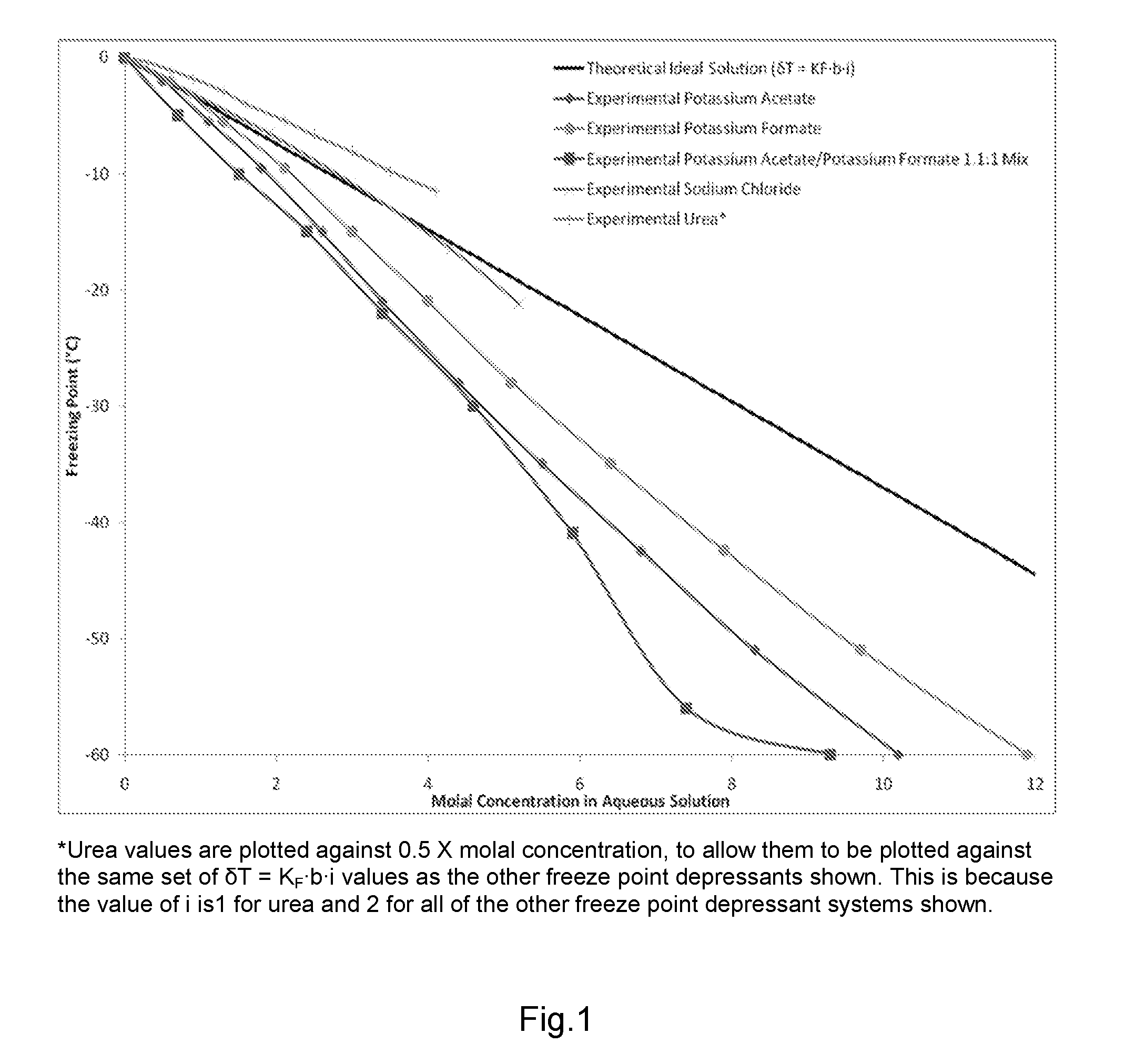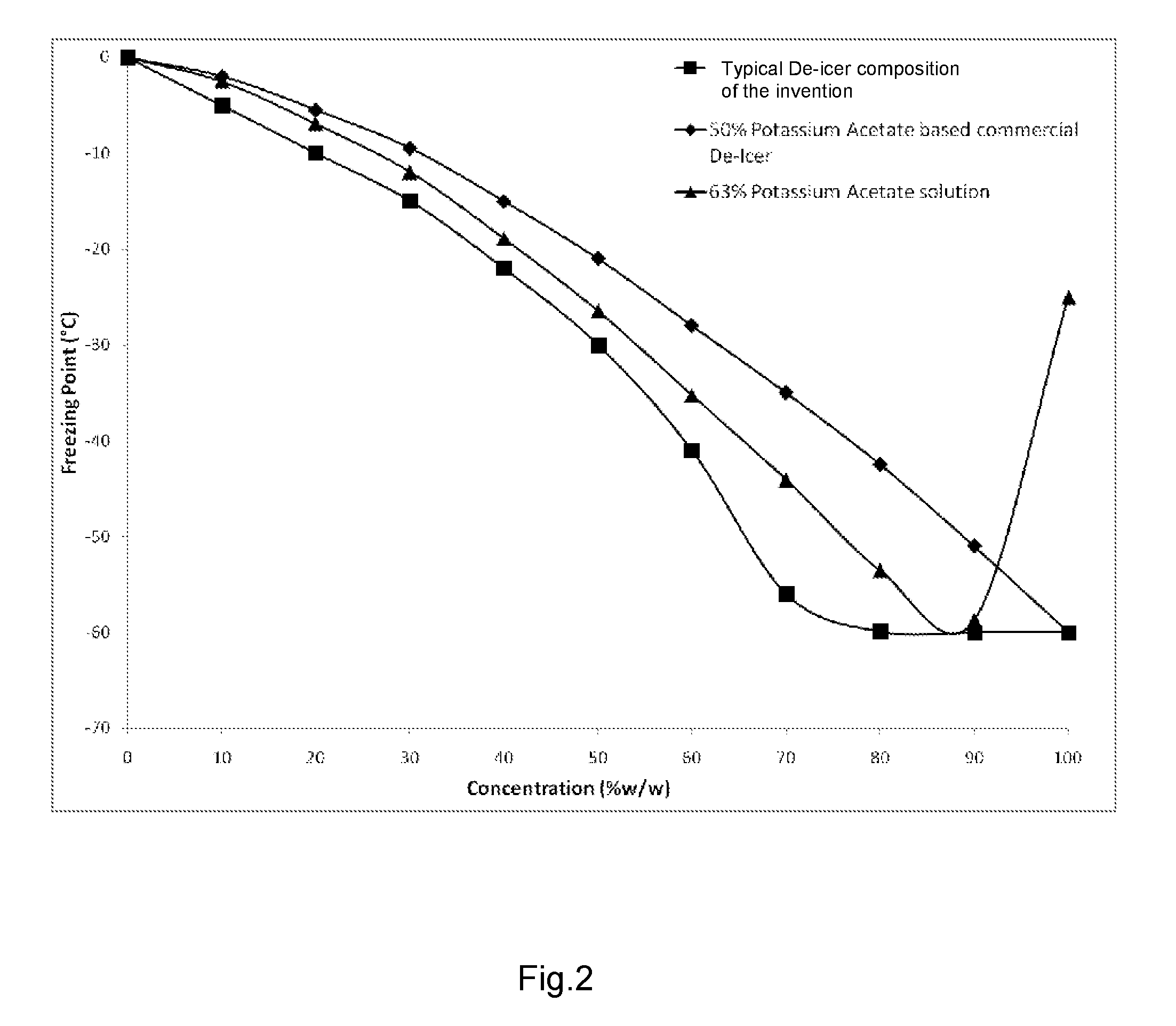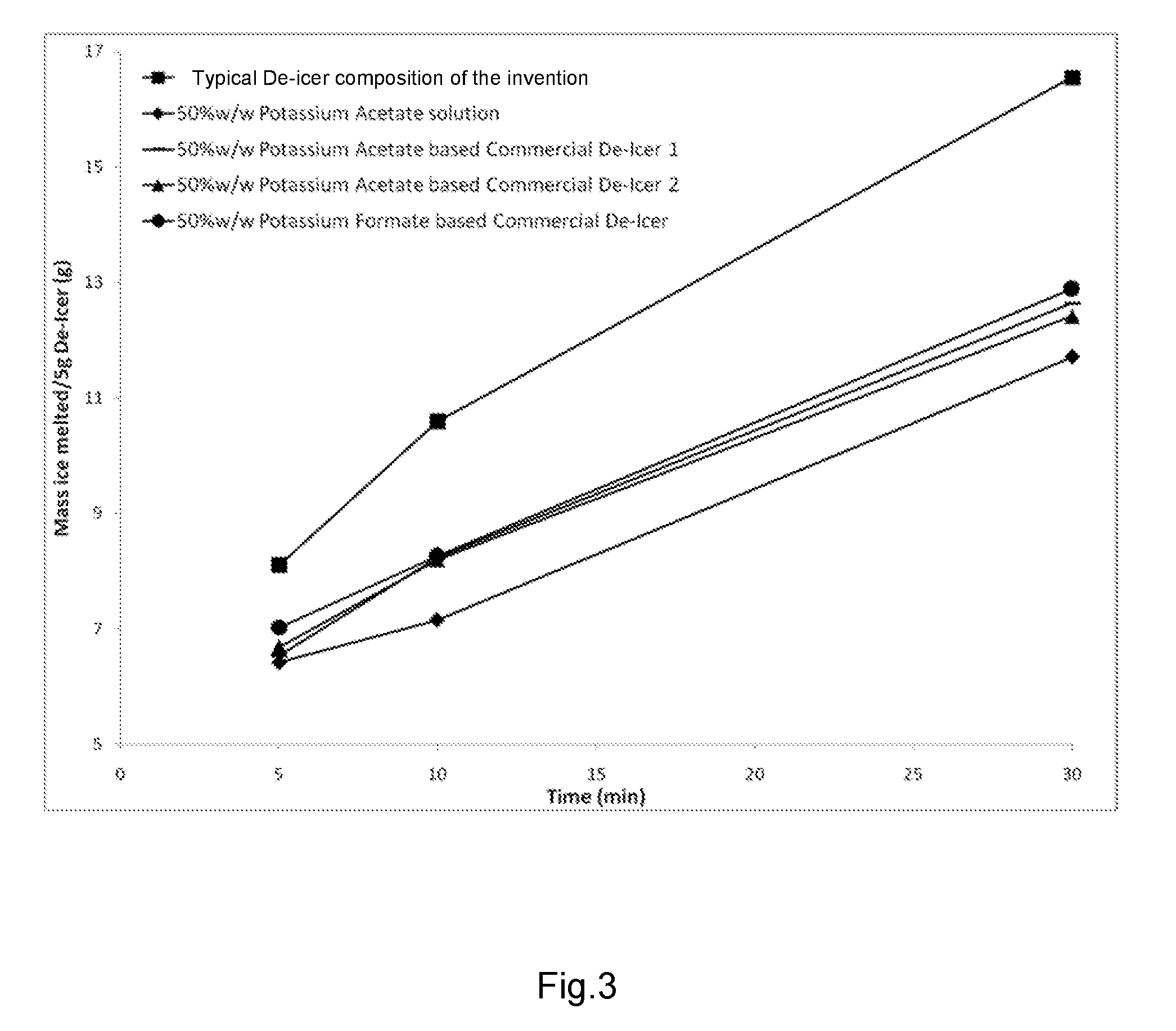De-icer and/or anti-icer compositions and methods
a composition and composition technology, applied in the direction of chemistry apparatus and processes, other chemical processes, etc., can solve the problems of ethylene glycol being toxic to humans, urea-based de-icer compositions have a highly adverse environmental impact, and urea-based de-icer compositions exhibit deleterious effects, so as to prevent the accumulation of snow, reduce environmental impact, and enhance de-icing and anti-icing performance
- Summary
- Abstract
- Description
- Claims
- Application Information
AI Technical Summary
Benefits of technology
Problems solved by technology
Method used
Image
Examples
example 1
Ice Melting Rate at −2° C.
[0113]FIG. 3 shows the results of the first test conducted at an ambient temperature of −2° C. (28° F.). On average, the ice melting rate of the de / anti-icer composition of the present disclosure was found to be 30% greater than the other compositions tested at −2° C.
example 2
Ice Melting Rate at −10° C.
[0114]FIG. 4 shows the results of the second test conducted at an ambient temperature of −10° C. (14° F.). On average, the ice melting rate of the de / anti-icer composition of the present disclosure was found to be 43% greater than the other compositions tested at −10° C.
example 3
Heat of Hydration Test Method and Results
[0115]In the description and claims of the present application, reference is made to “the heat of hydration test procedure as specified herein”. The heat of hydration test procedure thus referred to is as specified in the following three sections HTP1, HTP2 and HTP3.
[0116]HTP1
Apparatus and reagents required:—
[0117]clean, dry 250 ml tall-form borosilicate glass beaker;[0118]clean, dry 150 ml tall-form borosilicate glass beaker;[0119]clean, dry laboratory stirring thermometer, working range at least 10 to 40° C. (50 to 104° F.), with individual graduations no greater than 1° C. (2° F.), in good working order and reliable state of calibration;[0120]top-pan laboratory balance of precision ±0.1 g, in good working order and reliable state of calibration;[0121]expanded polystyrene or mineral-wool type insulation;[0122]ASTM D1193 type IV water;[0123]de / anti-icer product sample.
[0124]HTP2
Test Procedure
[0125]i. The test is performed at an ambient tempe...
PUM
| Property | Measurement | Unit |
|---|---|---|
| w/w | aaaaa | aaaaa |
| temperature | aaaaa | aaaaa |
| temperature | aaaaa | aaaaa |
Abstract
Description
Claims
Application Information
 Login to View More
Login to View More - R&D
- Intellectual Property
- Life Sciences
- Materials
- Tech Scout
- Unparalleled Data Quality
- Higher Quality Content
- 60% Fewer Hallucinations
Browse by: Latest US Patents, China's latest patents, Technical Efficacy Thesaurus, Application Domain, Technology Topic, Popular Technical Reports.
© 2025 PatSnap. All rights reserved.Legal|Privacy policy|Modern Slavery Act Transparency Statement|Sitemap|About US| Contact US: help@patsnap.com



